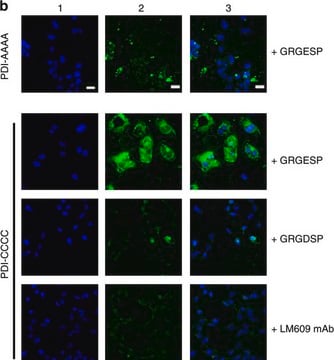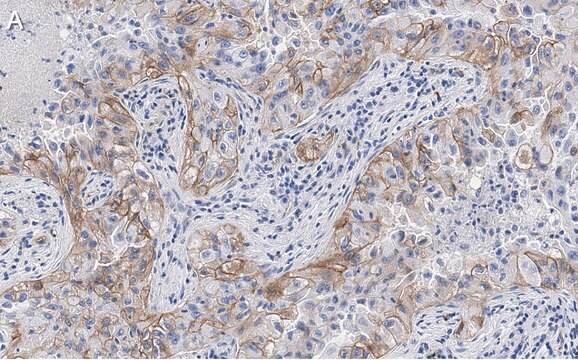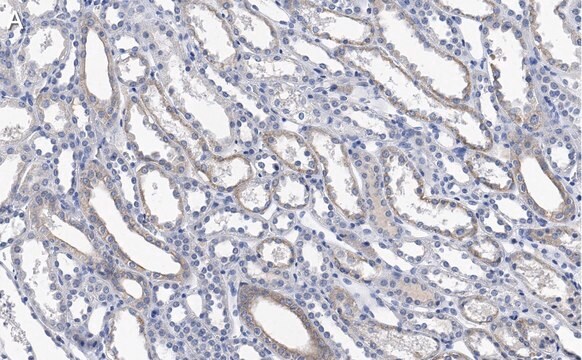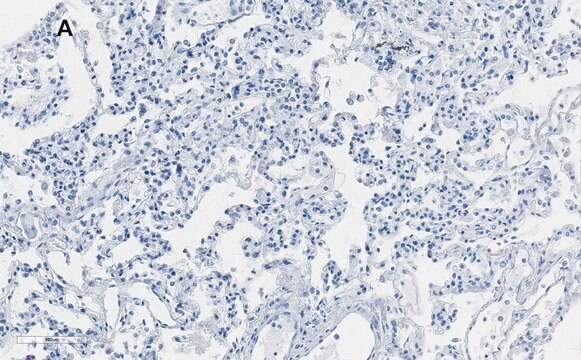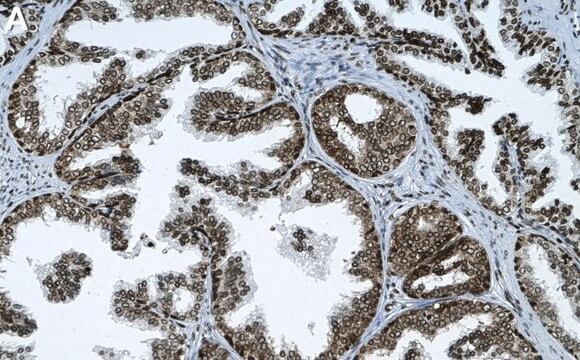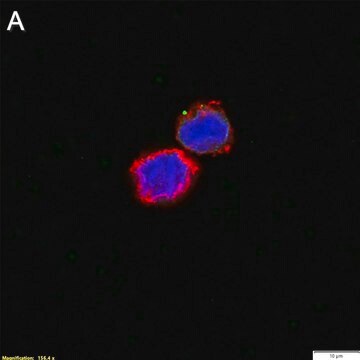MAB1876-Z
Anti-Integrin αVβ6 Antibody
mouse monoclonal, 27.1 (VNR-1)
Sinonimo/i:
Integrin alpha-V, Integrin αVβ3, Vitronectin receptor subunit alpha, CD51, Integrin alpha-V heavy chain, Integrin alpha-V light chain, Integrin beta-3, Platelet membrane glycoprotein IIIa, GPIIIa, CD61
About This Item
Prodotti consigliati
Nome del prodotto
Anti-Integrin αVβ3 Antibody, clone 27.1 (VNR-1) (Azide Free), clone 27.1 (VNR-1), from mouse
Origine biologica
mouse
Livello qualitativo
Forma dell’anticorpo
purified antibody
Tipo di anticorpo
primary antibodies
Clone
27.1 (VNR-1), monoclonal
Reattività contro le specie
human, rat
tecniche
flow cytometry: suitable
immunohistochemistry: suitable (paraffin)
Isotipo
IgGκ
N° accesso NCBI
Condizioni di spedizione
dry ice
modifica post-traduzionali bersaglio
unmodified
Informazioni sul gene
human ... ITGAV(3685) , ITGB3(3690)
Descrizione generale
Specificità
Immunogeno
Applicazioni
Flow Cytometry Analysis: A representative lot detected the surface expression of vitronection receptor (VnR) complex on CHO cells co-transfected with αv and either wild-type β3 or the Cam variant of Glanzmann′s thrombasthenia with the Asp119Tyr mutation (β3cam) (Loftus, J.C., et al. (1990). Science. 249(4971):915-918).
Affects Function: A representative lot blocked M21 human melanoma cells from adhering to fibrinogen (Fg), von Willebrand Factor (VWF), or fibronectin (FN) coated surface in a Integrin αvβ3-dependent manner (Pilch, J., et al. (2002). J. Biol. Chem. 277(24): 21930-21938).
Affects Function: A representative lot blocked metastatic human breast cancer cells from adhering to collagen I matrix (Felding-Habermann, B., et al. (2001). Proc. Natl. Acad. Sci. U. S. A. 98(4):1853-1858).
Cell Structure
Adhesion (CAMs)
Qualità
Immunohistochemistry Analysis: A 1:50 dilution of this antibody detected Integrin αVβ3 in rat cerebral cortex tissue.
Descrizione del bersaglio
Stato fisico
Stoccaggio e stabilità
Handling Recommendations: Upon receipt and prior to removing the cap, centrifuge the vial and gently mix the solution. Aliquot into microcentrifuge tubes and store at -20°C. Avoid repeated freeze/thaw cycles, which may damage IgG and affect product performance.
Altre note
Esclusione di responsabilità
Non trovi il prodotto giusto?
Prova il nostro Motore di ricerca dei prodotti.
Raccomandato
Codice della classe di stoccaggio
12 - Non Combustible Liquids
Classe di pericolosità dell'acqua (WGK)
WGK 1
Punto d’infiammabilità (°F)
Not applicable
Punto d’infiammabilità (°C)
Not applicable
Certificati d'analisi (COA)
Cerca il Certificati d'analisi (COA) digitando il numero di lotto/batch corrispondente. I numeri di lotto o di batch sono stampati sull'etichetta dei prodotti dopo la parola ‘Lotto’ o ‘Batch’.
Possiedi già questo prodotto?
I documenti relativi ai prodotti acquistati recentemente sono disponibili nell’Archivio dei documenti.
Il team dei nostri ricercatori vanta grande esperienza in tutte le aree della ricerca quali Life Science, scienza dei materiali, sintesi chimica, cromatografia, discipline analitiche, ecc..
Contatta l'Assistenza Tecnica.
